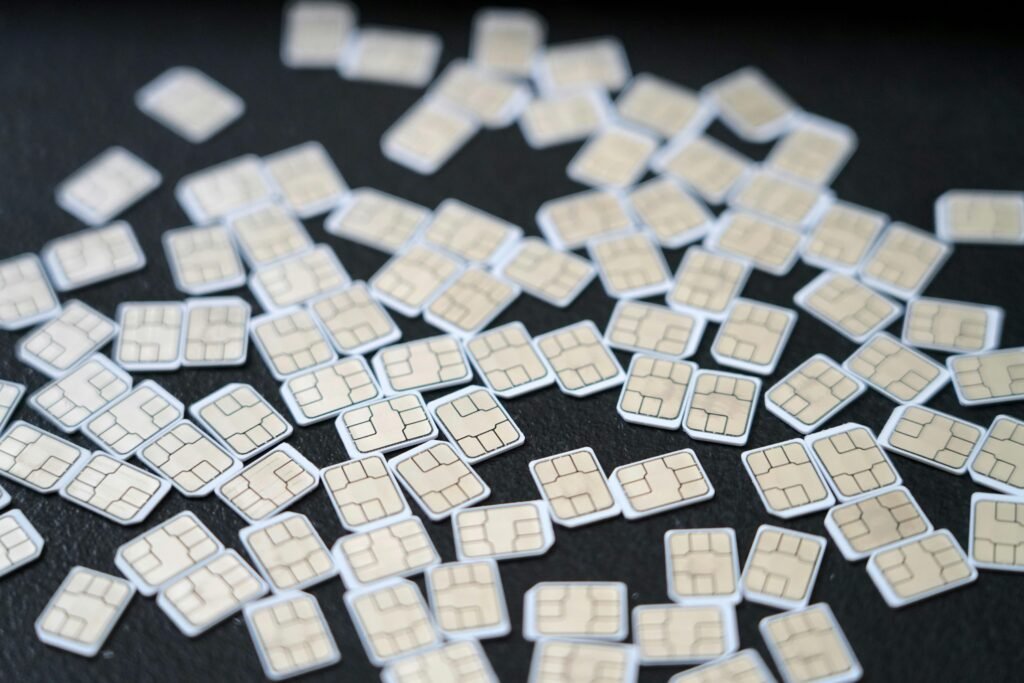
Unlocking the Future of Connectivity with eSIMX
In the current world of immense technological breakthroughs, our interaction with mobile networks is likely to change more rapidly than ever. Here is eSIMX-a pioneering advancement that vows to upend everything we know about mobile connectivity. But just what is eSIMX, and why is it about to be a big deal in the world of technology?
What exactly is eSIMX?

eSIMX is short for Embedded Subscriber Identity Module Extended, the digital SIM card built into the device explicitly. Its processors having made their debut, they will be EM-power for features like software switching without the need for: to snap out and put in traditional ones. Users can switch their carriers, change, and update network settings and manage multiple subscriptions through an easy task given by such a thing as an upgrade.
How eSIMX Technology Works
At its core, eSIMX technology uses advanced encryption and secure elements to store and control mobile net credentials. The technology safeguards all traffic on the network and gives users the confidence that their network connection will always be secure and reliable. Moreover, eSIMX can support different technologies, extending its compatibility with carriers and devices.
Benefits of Taking eSIMX
Convenience: eSIMX saves time and grants convenience that no physical SIM card or carrier shop switching can offer. Everything could be managed digitally.

Flexibility: Users can switch carriers with ease and, thus, enjoy savings on roaming fees. This particular benefit means that multiple travelers can save a lot of money by switching to another preferred carrier when they travel to another region.
Space-Saving: Removing the need for a physical SIM card slot saves space in a device-the company can thus pack in something else that it wants to use, giving it a beautiful look and easy functionality.
Sustainable: eSIMX technology reduces e-waste; with fewer physical SIM cards being produced and thrown away, the electronic junk gets reduced.the environmental impact is significantly minimized.
Future Prospects of eSIMX
The utilization of eSIMX will increase as more producers and carriers recognize its power. eSIMX, ranging from smartphones and tablets to wearables and IoT devices, is ready to become the default functionality across all kinds of connected devices. Thus, with the deployment of additional 5G networks will insist that eSIMX ensures that connectivity in all dimensions continues smoothly and superfast up to user scales across the globe.
sing up here:https://skylarkconnectllc.pxf.io/c/5967979/2147806/27320
The Evolution of Mobile Connectivity: Shaping the Future of Communication
Mobile connectivity has come a long way since the arrival of the first mobile phones. What started as a simple form of connection for voice calls on the go has become a powerful tool that, for many of us, connects us to the outside world in ways we could never imagine. In this blog, we shall examine the evolution of mobile connectivity, its impact on our lives, and what the future holds for this technology developing.
The Beginning
The 1980s saw the birth of mobile connectivity, as with the first generation (1G) networks in the 1980s. These were analog networks that only allowed limited voice communication through mobiles because of very low capacity and coverage. Nevertheless, the groundwork for mobile communication had been laid, and within no time, this concept had become a giraffe-galloping opportunity for commercial ventures.
The Digital Revolution
The second generation of mobile networks arrived in the 1990s, bringing digital technology into the mix. Voice clarity was vastly improved, text messaging became available, and limited data services were introduced. The introduction of the 2G network paved the way for mobile services with more potential, heralding the mobile revolution.
https://mandeeleguide.com/the-future-of-remote-work/
The Leap
With the advent of 3G networks in the early 2000s, mobile connectivity witnessed a huge leap forward. The supporting networks permitted faster data transfers to connect the internet, send emails, and download multimedia content on mobile devices. The smartphone era had begun, with its roots deep down into our daily lives by this time.
The 4G Era
With the inception of fourth-generation (4G) networks, there was a global reach for high-speed mobile connectivity. With faster data rates and more reliable connections, 4G has fundamentally changed how we use our mobile devices. Watching HD videos, video calls, and accessing cloud-based services have become gradual additions to our daily lives in the personal and professional spectrums.
The Impact of Mobile Connectivity
Mobile connectivity has a deep impact on several aspects of our lives:
Communications: Mobile connectivity has revolutionized communication methods. From voice calling and texting to social media networking and instant messaging apps, it has never been easier to stay connected with friends, family, and colleagues.
Work and Productivity: The surge of mobile connectivity has drastically changed the way we work. Remote work, online collaboration, and cloud-based services are supposed to allow for greater flexibility and productivity.
Entertainment: Mobile connectivity has reshaped entertainment. With the streaming services, online games, and multimedia content that are available on our mobile devices, there is no limit to the possibilities for entertainment.
Information Access: It has opened the door to access much information. From news, educational resources, navigations, and real-time updates, mobile devices have turned into indispensable tools for remaining informed and making informed decisions.
The Future of Mobile Connectivity
When we think about the future, mobile connectivity continues to evolve, powered by paramount technological progress and user’s increasing demands. The fifth-generation (5G) networks promise faster data speeds, lower latency, and higher capacity than previous-generation networks. New possibilities will open up with 5G technology to allow for smart cities, autonomous vehicles, augmented reality, and the Internet of Things (IoT).
To conclude,
In sum, eSIMX is certainly a differentiator for mobile connectivity technology. Its appealing convenience, flexibility, and security would be highly sought after by consumers and enterprises alike. In a continuously connected world, eSIMX will be the focal point of this digital-driven transformation towards a new era of connectivity.
Indeed, the evolution of mobile connectivity has been nothing short of extraordinary. From the good old times of making voice calls to the present era of high-speed and datas-driven networks, mobile connectivity has yet transfigured the way we live, work, and connect ourselves to the world at large. The future of mobile connectivity, as we walk on, promises to immensely beautify our digital experiences and our interactivity with technology.



